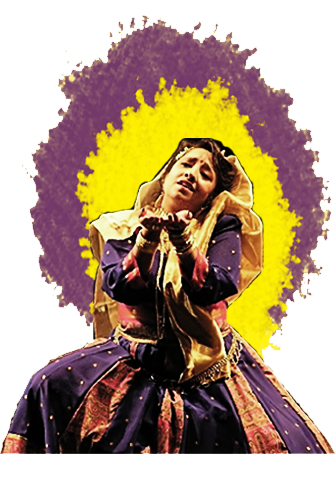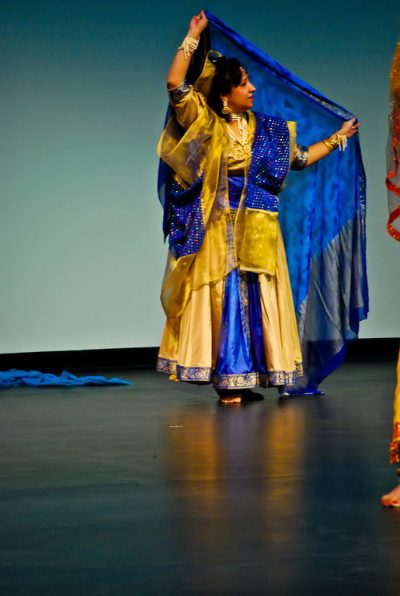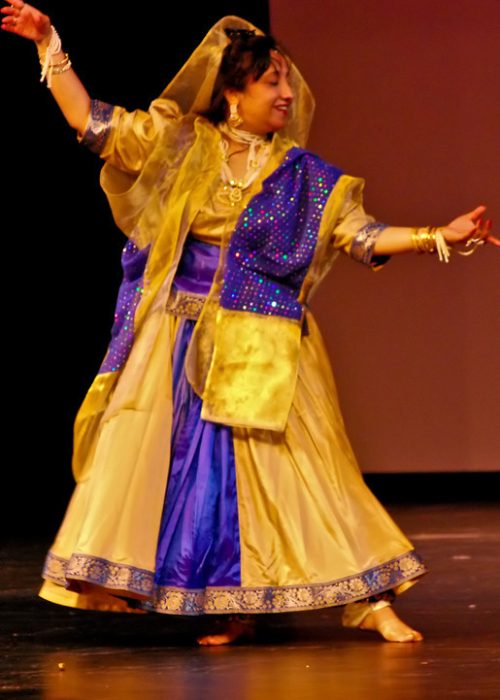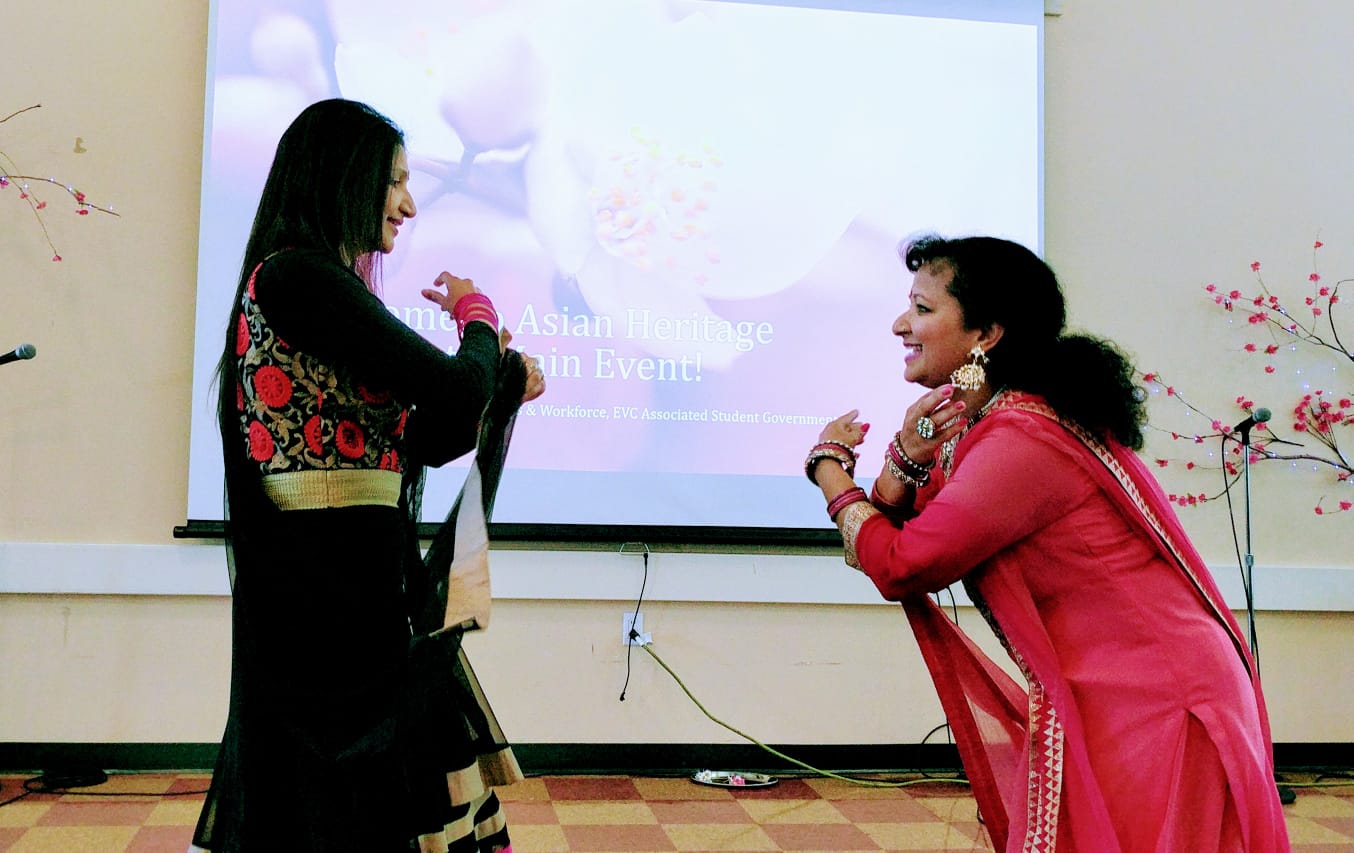Kathak, an Indian classical dance form originated from the Sanskrit word called ‘Katthaka’, the art of storytelling, eventually incorporated with mime, graceful artistic physical movements, foot work and rhythm patterns as well as spins.
Kathak is a very special form of Indian Classical dances characterized by fast footwork (Tatkar), spins (Chakkar) and innovative use of facial expressions (Bhava).
Three major styles (gharanas) of Kathak are: Jaipur Gharana, Lucknow Gharana and Benaras Gharana. Each unique to its own style of reflecting Classical Kathak Dancing and the knowledge base.
Kathak Expression
Nritta is the pure dance form, the technical demonstration of fast speed intricate footwork, fast circles and graceful physical movements depicting improvised rhythmic patterns and compositions like Tordas, Tukras, Parans, That, Amaad, Laris and Tehais along with the footwork called Tatkar and typical Kathak spins called Chakkars.
Abhinaya is the facial expression where story telling is expressed through dancing and acting showcasing the story line and the theme performing on bhajans, thumris, ghazals, bandish.

Kathak is a very dynamic art form embracing fast rhythm beats, improvised elements, graceful movements and emotional facial expressions.
Kathak expresses the strength and the technical mastery (Tayari), the fast rhythm beats and timing (Layakari), the foot work, spins, and movements (Nritta) along with graceful dance poses, facial expression, mime, storytelling and acting (Nritya and Natya) embracing deeper life journey emotions reflecting the aesthetics aspect of beautiful elegant and true artistic inner expressions (Khubsurti and Nazakat).
what people say
Testimonials
Susmita ji is a great Kathak teacher and dancer. Her dance is soulful and I am immensely happy that I am learning dance from her.
A.
Susmita ji is one of the best dance teachers I have ever come across. It is a pleasure to learn Kathak from her.
L.
Dancing has always been a passion for me. I am so glad I met Susmita Bhatacharya who has been a great teacher and guide.
T.


Kathak:
The Pinnacle of Elegance
The Indian classical dance art referred to as Kathak is defined by its rapid footwork (Tatkar), spins (Chakkar), and artistic use of facial expressions (Bhava). The word originates from the Sanskrit word “Katthaka” referring to the art of storytelling. People from all socioeconomic groups have an excellent opportunity to learn Indian classical dance at the Dance Studio.
Mastering the
Art
The essence of Kathak lies in the discipline required to master its complex movements and convey emotions with grace and elegance.
Tatkar (Footwork)
Tatkar is the rhythmic and intricate footwork in Kathak. Tatkar showcases the dancer’s skill, precision, and command over rhythm, and it is an essential aspect of any Kathak performance.
Chakkar (Spins):
Chakkar refers to the graceful spins executed by Kathak dancers. Chakkar adds a dynamic and visually captivating element to the performance, displaying the dancer’s prowess and artistry.
Abhinaya (Expression)
Abhinaya is the facial expression used when performing bhajans, thumris, ghazals, and bandish. They are subsequently used to portray stories while dancing and acting out scenarios.
Embodied Elegance: Kathak's Soulful
Connection
Kathak beautifully unites rhythmic footwork, expressive gestures, and emotional storytelling, creating a captivating dance form that resonates deep within the soul.
Dancing Narratives: Kathak's
Theatrical Artistry
Kathak’s performance and theatricality truly redefine the boundaries of dance, transforming it into a multidimensional art form that leaves an indelible impression on both the performers and spectators, evoking a sense of wonder, awe, and appreciation for its profound artistic heritage.






